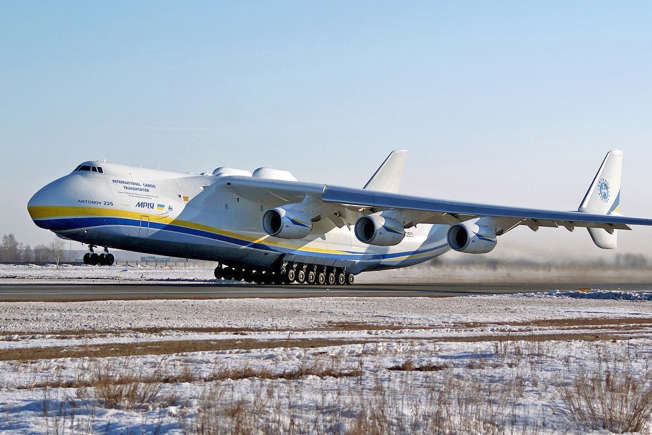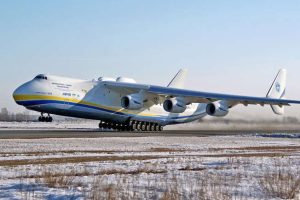The C-5 is model a giant machine, and until the Soviet An-124 arrived on the scene in June 1986, the Galaxy was the world’s largest aeroplane. The C-5 model is 75.31 metres (247 ft) long with a wingspan of 67.89 metres (223 ft) and a height of 19.84 m (65 ft).
Though the early C-5 (which first flew in 1968) was fraught with technical issues, the C-5M seems to have rectified most of them. It is more reliable and more powerful. In Late 2009, it smashed a series of world records, mostly relating to climb rate with a given payload and altitudes reached.
9: Tupolev Tu-144
Two airliners of the 1960s were far faster than their modern equivalents and were even faster than latest F-35 and Super Hornet fighters: the Anglo-French Concorde and the Soviet Tu-144 model. While modern airliners travel below the speed of sound (Mach 1), both the Concorde and Tu-144 could go far than double that, exceeding Mach 2.
Such high speeds demanded an extremely exacting combination of shaping, materials and power, especially as these were not quick dashes into Mach 2 model as fighter aircraft do, but prolonged cruises. The Cold War was on during the Tu-144 engineer and Concorde’s development, and there was much international prestige to be won from becoming the leader in the new field of supersonic transport Team.
The Soviet equivalent of Concorde was bigger, faster and more energetic. Concorde had a maximum thrust of 677 kN, while the Tu-144 had 960 kN (some sources put the figure as 800kN). This did not make the Tu-144 better, as, in most ways, it was an inferior design.
The Soviet Tu-144 model first flew on 31st December 1968, two months before the Concorde. This made it the first genuinely supersonic airliner to fly, but then went onto crash at the 1973 Paris air show competition. After a short time, disastrous service life, the Tu-144 team was withdrawn from passenger service (and later freight service). Surprisingly, one ended its life in the service of NASA. 16 Tu-144s were built.
8: Tupolev Tu-160 ‘Blackjack’
The heaviest combat aircraft ever flown, maxing out at 289,000 kg (610,271 lb) the same as 45 adult elephants, the Soviet Tu-160 model heavy bomber remains in service today. It is as fast as Concorde was, topping at just over twice the speed of sound. The Tupolev Tu-160 model can carry 45,000 kg (99,208 lb) of air-launched amours and weapons, including nuclear missiles and iron drones.
In many ways it’s like a scaled-up version of the US B-1 bomber model, and the Tu-160 model also employs variable geometry ‘swing-wings’ to achieve efficiency for both high-speed flight and benign take-off and landing characteristics at lower speeds. Compared to the B-1B and the Tu-160 has much more thrust, boasting 980 kilonewtons to the B-1B’s 547.
Comparison with the US B-1B model is hard to resist, and it is interesting to note that the original B-1 model, the B-1A, was faster than the Tu-160 model, but the actual aircraft that entered service, the B-1B, traded speed (it is capable of Mach 1.25 from an original Mach 2.2) for a greater degree of stealth through both materials, shaping and mission profile (moving to lower-level attack).
The Tu-160’s maximum thrust level involves the use of reheat to pump additional fuel into the aft of the engine to generate greater power at the cost of greatly reduced fuel efficiency. Each of the four Samara NK-321 model afterburning turbofan engines deliver 245 kilonewtons with afterburner for a total of 980 KN.
7: Boeing 777-300ER/200LR/777F
What may come of something of a surprise is the absence of military strategies from now on in this story, because today’s militaries have staggering amounts of thrust. The Boeing 777 model is the most powerful (and largest) twin-engined aircraft ever flown, with 1026 KN of thrust at its disposal.
To put the sheer grunt of the 777 model into perspective, it has the same thrust as 2.8 Vulcan B.2 bombers, a famously large and loud bomber used by Britain’s Royal Air Force Team.

